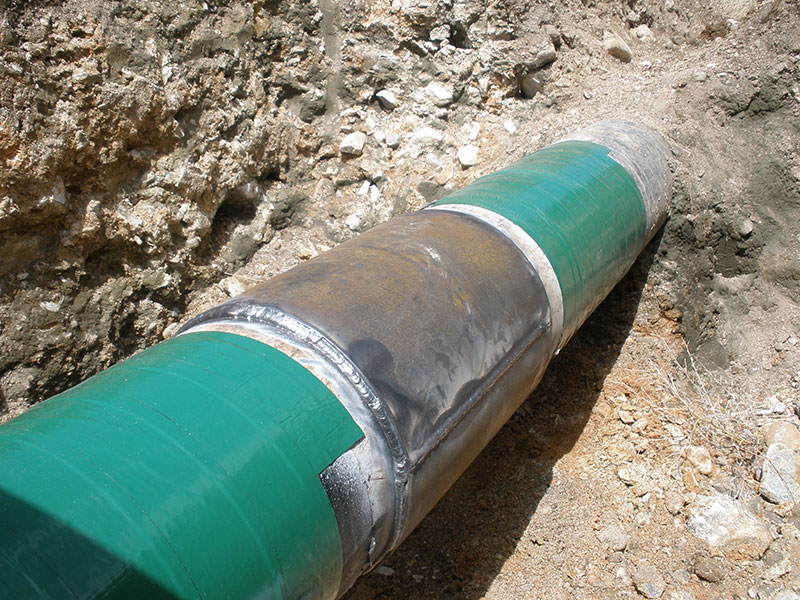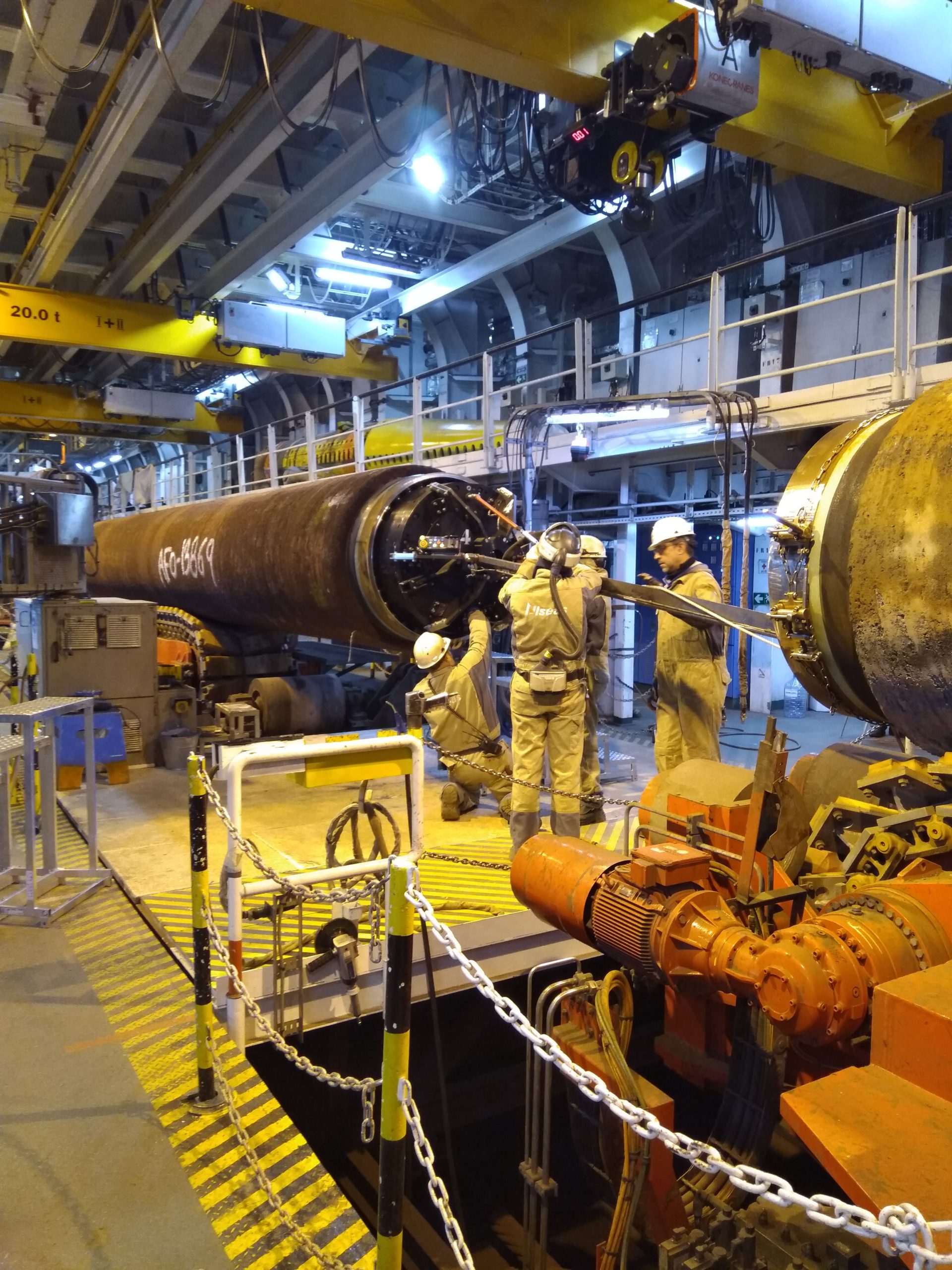Pipeline Welding Inspection: Ensuring Safety and Quality in Every Weld
Comprehending the Basics of Pipeline Welding Inspection: Critical Factors for Evaluating Weld Top Quality and Averting Failings
In the realm of pipeline welding inspection, the risks are without a doubt high, requiring a complete understanding of essential principles to ensure weld top quality and alleviate failure threats. Different crucial factors enter play, consisting of the selection of suitable products, the application of advanced examination methods, and the recognition of widespread welding problems. Furthermore, adherence to regulative standards plays an essential role in keeping system stability. Yet, the intricacies intrinsic in these processes increase important concerns concerning finest techniques and emerging modern technologies that could redefine examination protocols-- inquiries that require more exploration.
Value of Weld Top Quality
The honesty of a pipe is fundamentally reliant on the high quality of its welds, making weld high quality a critical consider making sure secure and efficient operation. A pipe weld functions as a joint factor where products are signed up with, and any type of shortages around can lead to significant structural weaknesses. Poor weld quality can result in leaks, ruptures, and catastrophic failings, posing serious safety hazards and environmental risks.
Several factors add to the top quality of a weld, consisting of the selection of welding procedure, the abilities of the welder, and the conditions under which the welding is carried out - Pipeline Welding Inspection. Inadequate preparation, inappropriate warmth input, and contamination can endanger weld stability, resulting in issues such as porosity, incomplete fusion, or splits. Consequently, rigid high quality control steps should be executed throughout the welding procedure to minimize these dangers
In addition, the lasting performance of a pipeline is greatly influenced by the sturdiness of its welds. Premium welds not only boost the general stamina of the pipe however also expand its life span, decreasing the demand for expensive repair work and downtime. Hence, ensuring remarkable weld high quality is paramount in pipe design and upkeep practices.
Secret Inspection Strategies
Guaranteeing weld quality requires the implementation of efficient inspection methods to identify prospective flaws before they bring about failings. Pipeline Welding Inspection. Amongst the most commonly used techniques are aesthetic evaluation, radiographic screening (RT), ultrasonic testing (UT), and magnetic bit screening (MT) Each technique is and offers a distinctive function picked based upon the particular demands of the pipe project
Aesthetic examination is the first line of protection, allowing examiners to examine surface area conditions, positioning, and general craftsmanship. It is a affordable and fast approach that can disclose obvious problems. Radiographic testing gives a comprehensive sight of inner weld honesty by using X-rays or gamma rays to spot subsurface problems. This strategy is specifically reliable for identifying fractures, gaps, and incorporations.
Ultrasonic testing employs high-frequency sound waves to evaluate the thickness and integrity of welds, making it ideal for discovering inner discontinuities. Magnetic fragment testing is a reliable approach for recognizing surface area and near-surface defects on ferromagnetic products by using electromagnetic fields and great ferrous fragments. By utilizing these crucial inspection strategies, pipe welding assessors can make sure the best requirements are preserved, ultimately causing much safer and a lot more dependable pipe systems.
Usual Welding Problems
In the world of pipeline welding, recognizing common welding flaws is important for maintaining structural honesty and safety and security. These defects can lead to tragic failings otherwise recognized and addressed quickly. Amongst the most widespread flaws are porosity, which occurs when gas allures in the weld metal, producing gaps that damage the joint. Another substantial issue is lack of combination, where the weld metal does not adequately bond with the base material, jeopardizing the joint's stamina.

Cracks are additionally an essential problem, manifesting in various forms such as hot cracks, cold fractures, and root splits. Each kind presents special difficulties and needs particular evaluation strategies for detection. Undercut is one more flaw that can reduce the weld's cross-sectional area, resulting in stress and anxiety concentration points, while slag incorporation occurs when non-metallic material ends up being caught in the weld pool, negatively influencing the mechanical buildings of the weld.
Additionally, inaccurate bead shape can bring about unequal tension circulation. Recognizing these usual flaws is essential for welders and examiners alike, as very early discovery and adjustment are crucial to making certain the durability and integrity of pipe systems.

Materials and Their Impact
Choosing the suitable materials for pipe welding significantly affects the general efficiency and integrity of the welded joints. The selection of base steels, filler products, and coverings plays a crucial role in determining the strength, rust resistance, and resilience of the welds. For example, carbon steel is typically utilized for its balance of toughness and expense, but it might be susceptible to corrosion in certain atmospheres, requiring the usage of safety finishes or corrosion-resistant alloys.
In addition, different steel welding requires careful factor to consider of thermal development residential or commercial properties and potential galvanic rust. The compatibility of materials can significantly affect the microstructure of the weld, causing variants in mechanical residential properties. For instance, stainless-steel provides superb rust resistance but might call for certain filler products to ensure an audio weld joint.
In enhancement, the influence of temperature and ecological problems on material option can not be ignored. High-strength steels might shed ductility at raised temperature levels, while low-temperature applications could need products with improved sturdiness. Eventually, recognizing the ramifications of product choices is crucial for accomplishing optimal weld quality and stopping failings in pipeline systems.

Regulatory Specifications and Conformity
Regulative requirements and compliance get more play a critical role in pipe welding, developing the structure within which risk-free and effective techniques are preserved. These requirements are created by various organizations, including the American Society of Mechanical Designers (ASME), the American Welding Society (AWS), and the Pipe and Hazardous Materials Safety And Security Management (PHMSA) Adhering to these policies makes sure that welding treatments satisfy the called for high quality and security benchmarks.
Compliance with governing standards is crucial not click to read more only for making certain the stability of the welds however additionally for protecting the environment and public safety. Examiners are tasked with confirming that welding procedures adhere to these criteria via extensive evaluations of both the processes and the last welds. This involves assessing welder qualifications, welding treatments, and the materials utilized.
Failure to abide by well-known guidelines can result in substantial repercussions, consisting of expensive repairs, lawful obligations, and devastating failings. For that reason, companies should incorporate compliance right into their operational methods, fostering a culture of safety and security and high quality. Normal training and audits are vital elements in maintaining adherence to these regulative criteria, guaranteeing that all employees are well-informed and furnished to copyright the greatest degrees of pipeline welding high quality.
Verdict
In verdict, a thorough understanding of pipe welding assessment is crucial for making sure weld quality and avoiding failures. By employing vital examination strategies and identifying usual welding flaws, examiners can efficiently assess the honesty of welds.
In the world of pipeline welding evaluation, the risks are unquestionably high, necessitating a comprehensive understanding of basic concepts to guarantee weld quality and minimize failing risks (Pipeline Welding Inspection).The honesty of a pipe is fundamentally dependent on the high quality of its welds, making weld quality a critical variable in making certain secure and effective operation.A number of elements add to the high quality of a weld, consisting of the option of welding procedure, the skills of the welder, and the problems under which the welding is done. Undercut is another flaw that can reduce the weld's cross-sectional area, leading to anxiety concentration factors, while slag inclusion happens when non-metallic product ends up being entraped in the weld pool, detrimentally affecting the mechanical residential or commercial properties of the weld
In verdict, an extensive understanding of pipe welding inspection is important for making certain weld top This Site quality and avoiding failings.